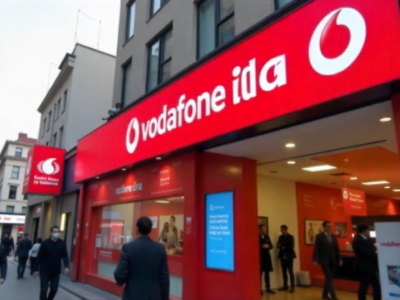Thinking of investing in Adani Wilmar? Get a deep-dive analysis of the share price, financial health, strengths, risks, and a clear verdict on its future potential. Is AWL a smart buy?
Adani Wilmar Share Price 2025: A Comprehensive Deep-Dive Analysis for Investors
The Adani Wilmar share price has been a topic of intense discussion among investors. As a joint venture between the Indian Adani Group and the Singapore-based Wilmar International, the company behind the iconic "Fortune" brand of kitchen staples is a formidable player in the Indian FMCG and edible oils space. But with the stock showing volatility, the critical question for every investor is: Is Adani Wilmar a hidden gem or a value trap?
In this deep-dive analysis, we go beyond the daily price movements to examine the company's financial fundamentals, growth drivers, potential headwinds, and what the experts are saying to help you make an informed decision.
Current Market Snapshot: Where Does AWL Stand?
As of recent trading, the Adani Wilmar share price is hovering around ₹271.60. The stock has seen its fair share of challenges, trading well below its 52-week high of ₹347.50. This places it much closer to its 52-week low, indicating a period of consolidation or potential undervaluation. With a market capitalization of approximately ₹35,273 crores, it remains a significant mid-to-large-cap stock that can't be ignored.
Decoding the Financial Health: The Core of the Analysis
A company's true strength lies in its financials. Here’s a breakdown of Adani Wilmar's vital signs:
· Impressive Revenue Growth: The company has demonstrated robust top-line expansion, with an annual revenue growth rate of nearly 24% for FY25. This significantly outpaces its own 3-year CAGR, showing acceleration in its core business.
· Profitability Metrics: The Price-to-Earnings (P/E) ratio stands at 32.60, which is on the higher side. This suggests the market has priced in high future earnings expectations. The Earnings Per Share (EPS) is ₹8.33, reflecting the company's profitability on a per-share basis.
· A Robust Balance Sheet: One of the most compelling strengths for a conservative investor is Adani Wilmar's balance sheet. The company holds more cash than debt, a key indicator of financial stability and lower risk during economic downturns. This provides a solid safety net and flexibility for future investments.
· Return on Equity (ROE): With an ROE of 12.99%, the company is efficiently generating profits from its equity base, which is a respectable figure in the competitive FMCG sector.

The Bull Case: Why Investors Are Optimistic
1. Market Dominance in Edible Oil: Adani Wilmar is a leader in the branded edible oil segment in India. With the "Fortune" brand enjoying immense household recognition, it has a strong defensive moat in a essential-consumption category.
2. Diversification into FMCG: The company is successfully expanding beyond oils into a full-range FMCG player. Its portfolio now includes staples like rice, atta, pulses, and sugar. This diversification reduces reliance on the low-margin edible oil business and taps into higher-growth segments.
3. Explosive E-commerce Growth: The company has adeptly capitalized on the digital revolution. Its e-commerce channel has seen remarkable growth, boosting margins and expanding its direct-to-consumer reach.
4. Strong Parentage: The backing of the Adani Group provides significant advantages in terms of supply chain logistics, operational expertise, and capital access.
The Bear Case: Key Risks and Challenges
1. Margin Pressure: The core edible oil business is characterized by thin margins and intense competition. Fluctuations in global crude palm oil and other oilseed prices can directly squeeze profitability, as seen in recent quarterly results.
2. High Valuation Concerns: A P/E ratio of over 32 is demanding. For the stock to justify this valuation, it must deliver consistently high earnings growth in the coming quarters; any disappointment could lead to a sharp correction.
3. Recent Underperformance: The stock has delivered negative returns over the past one-year and three-year periods. This trend has tested the patience of investors and reflects the market's concerns over near-term profitability and volume growth.
4. Regulatory and Commodity Risks: Being in the agri-commodity space, the company is exposed to government policies, import duties, and international trade regulations, which can be unpredictable.
What Are the Analysts Saying?
The analyst community is divided, offering a mixed but nuanced view. Out of the six major analysts covering the stock:
· Two advocate a "Strong Buy".
· One recommends a "Buy".
· Two suggest "Hold".
· One advises "Sell".
This divergence of opinion highlights the stock's contentious nature. However, the average 12-month price target is around ₹314.50, implying a potential upside of over 15% from the current price. The targets range from a bullish ₹386 to a cautious ₹260.
Final Verdict: Should You Invest in Adani Wilmar?
Adani Wilmar presents a classic case of a company with strong long-term fundamentals facing short-to-medium-term headwinds.
· For the Long-Term Investor: If you believe in the India consumption story and Adani Wilmar's ability to successfully transition into a diversified FMCG major, the current price could be an attractive entry point. The strong brand, distribution network, and healthy balance sheet are powerful assets for long-term wealth creation.
· For the Short-Term Trader: The stock may continue to see volatility due to margin pressures and commodity price fluctuations. It may not be the ideal bet for quick gains.
In conclusion, Adani Wilmar is not a straightforward buy. It is a bet on the management's execution capabilities in its diversification strategy. The analyst price targets suggest optimism, but the high P/E ratio and recent performance demand caution. A staggered investment approach, rather than a lump-sum investment, might be the most prudent strategy to navigate this promising yet challenging stock.
Disclaimer: This article is for informational and educational purposes only and should not be considered as financial advice. Please consult with a qualified financial advisor before making any investment decisions.






Leave a Reply